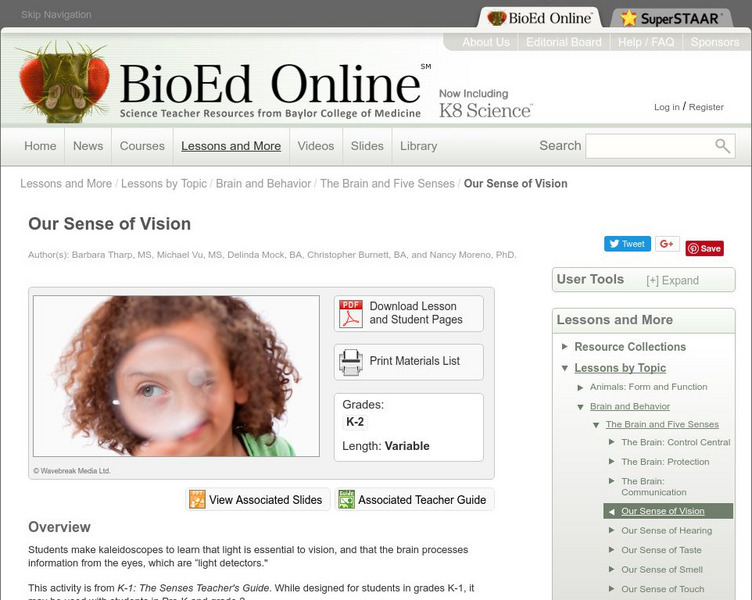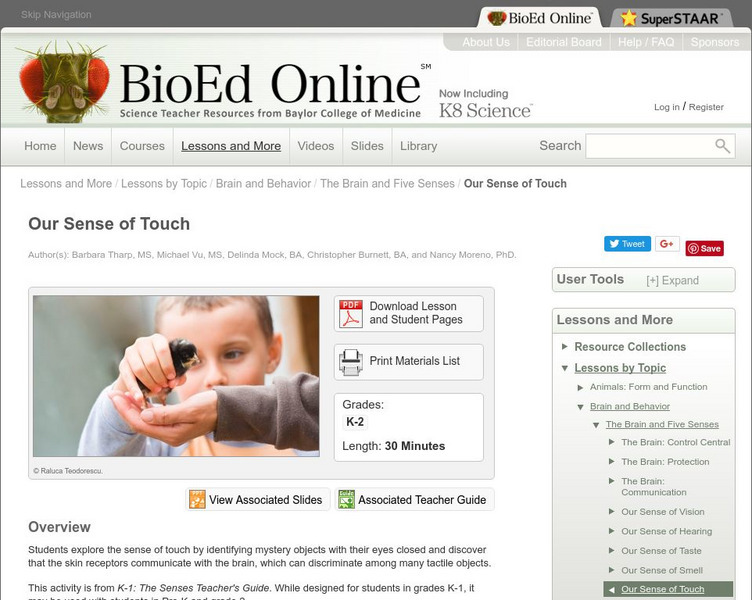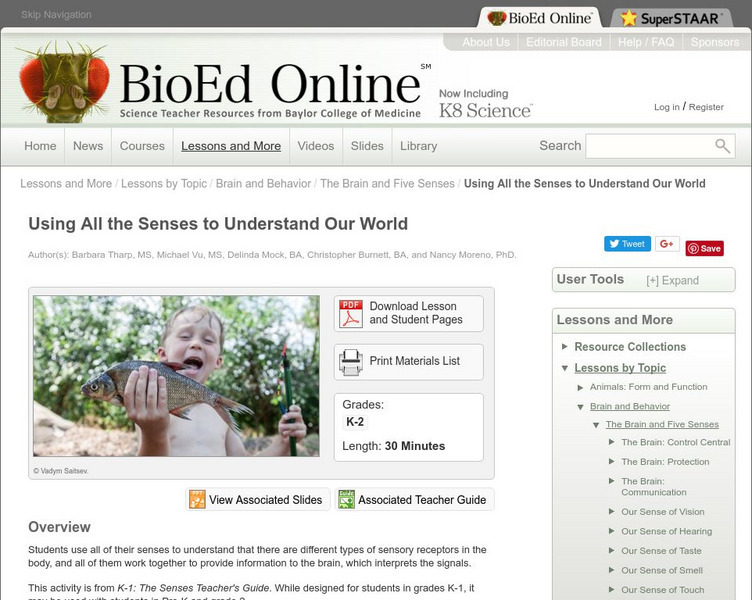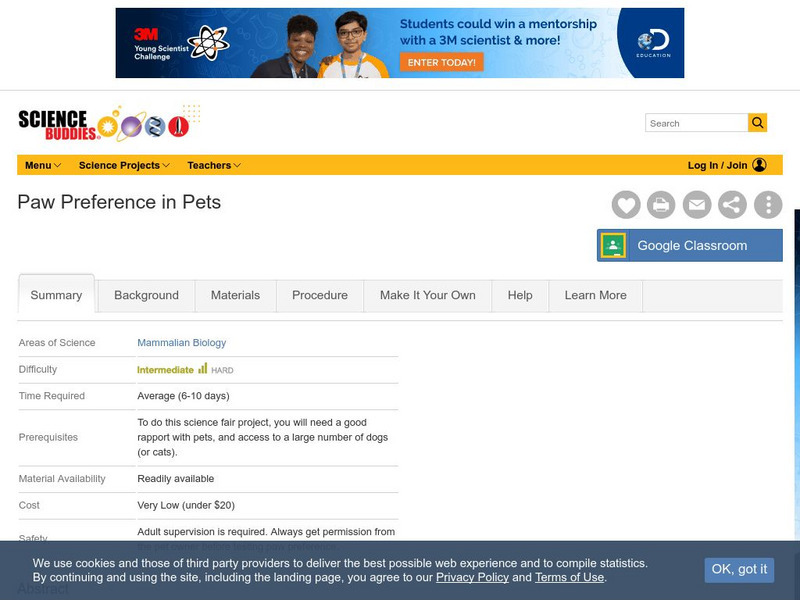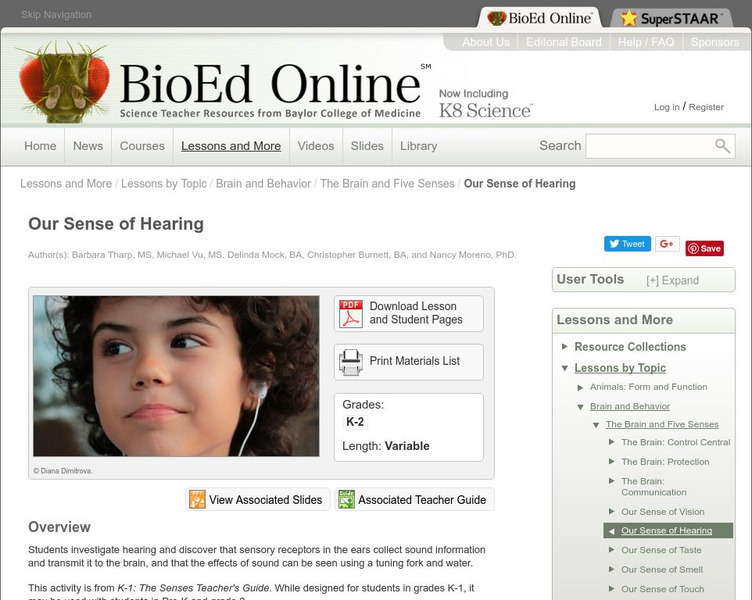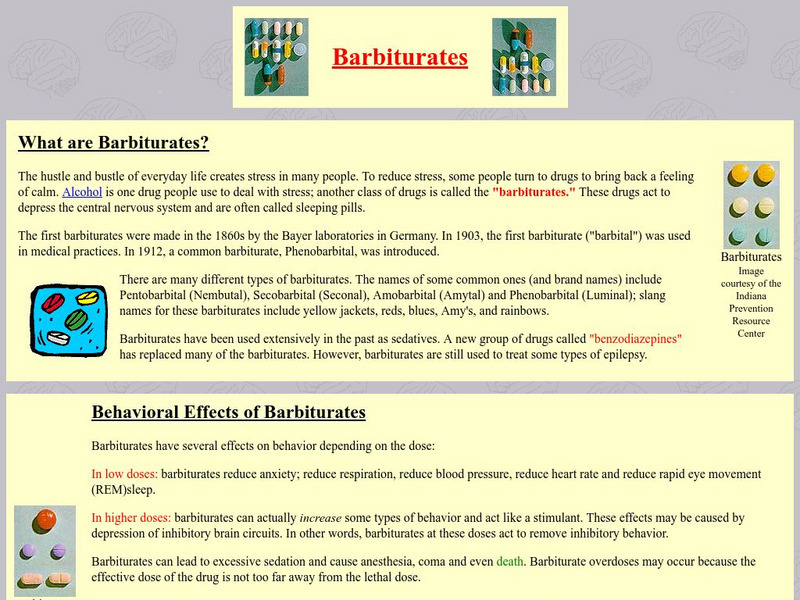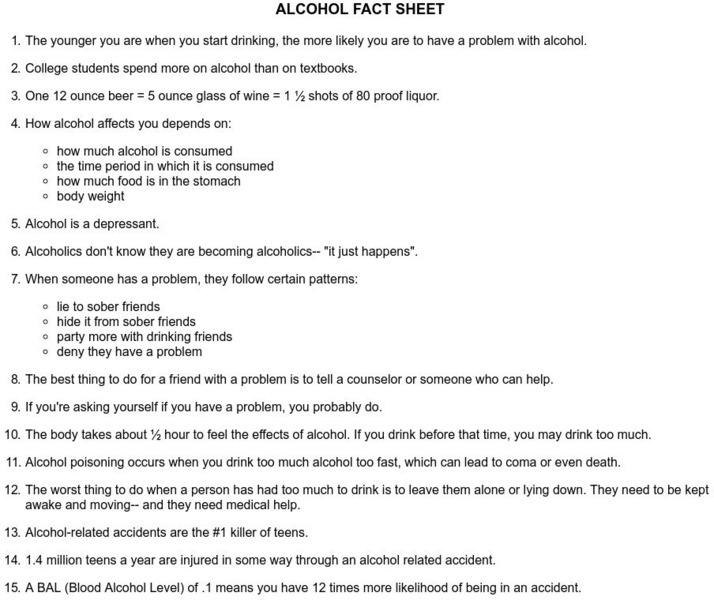Louisiana Department of Education
Louisiana Doe: Curriculum Hub: Ela Guidebooks: Teenage Brain
Ninth graders read National Geographic's "Teenage Brains" by David Dobbs and various informational texts about the development of the teenage brain to understand the factors that ultimately dictate teens' decision-making and behavior.
Louisiana Department of Education
Louisiana Doe: Curriculum Hub: Ela Guidebooks: Teenage Brain: Teens' Decision Making and Behavior
Students read two informational texts to understand the immediate and lasting effects that concussions and high impact sports have on the teenage brain.
Georgia Department of Education
Ga Virtual Learning: Psychology: Biological Foundations
Virtual learning course on human biology and brain function and how it affects our behaviors. Extensive collection of engaging materials, assignments, and activities for review.
BioEd Online
Bio Ed Online: Our Sense of Vision
Which parts of the body are involved in vision (seeing)? Is light important for vision? In this instructional activity students make kaleidoscopes to learn that light is essential to vision, and that the brain processes information from...
BioEd Online
Bio Ed Online: Our Sense of Smell
How does our sense of smell work? In this lesson students use four different flavors of dry soft drink mix to investigate the sense of smell, and learn that the nose can detect very small particles in air, and transmit the information to...
BioEd Online
Bio Ed Online: Our Sense of Touch
How does the sense of touch work? Is the sense of touch more sensitive in some parts of the body, such as fingertips, than in others? In this instructional activity students explore the sense of touch by identifying mystery objects with...
BioEd Online
Bio Ed Online: Using All Our Sources to Understand Our World
How do we use our senses to understand our surroundings? What types of input are provided by the different senses? In this lesson students use all of their senses to understand that there are different types of sensory receptors in the...
CommonLit
Common Lit: Text Sets: Psychology and the Mind
The mind has fascinated and mystified humans for millennia. Delve into the science behind the brain with these works on philosophy, foundational psychology, and scientific studies. This collection includes 61 Grade-Leveled texts (6-12)...
PBS
Pbs Learning Media: Zombie Autopsies: Spooky Psychiatric Medicine to Save World
After looking at zombies to learn about brain disease that alters behavior, students now must develop a cure for zombies. They use Skittles, where each color represents a different neurotransmitter. They then present their cure to the...
Science Buddies
Science Buddies: Where Do Lizards Go for Lunch?
You've probably heard about differences between the left brain and the right brain in people. One hypothesis has it that brain lateralization evolved as a survival mechanism in animals with eyes on the sides of their heads. One eye could...
National Institutes of Health
Understanding Alcohol: Information About Alcohol
Includes several sections, with charts and facts with information on alcohol use, alcoholism, youth drinking, and misconceptions and myths about alcohol and drinking. Though a "Teacher's guide," this website is suitable for students...
Science Buddies
Science Buddies: Paw Preference in Pets
The great majority of people have a distinct hand preference. The goal of this science fair project is to determine whether non-primate mammals (e.g., dogs or cats) have a paw preference, which might indicate lateralization of function...
Other
Brains.org: Classroom Management
Discipline is widely regarded by most educators and the public alike as the number one concern in schools. Even though administrators and teachers alike view discipline as their number one issue, newly graduated teachers still feel...
BioEd Online
Bio Ed Online: Our Sense of Hearing
What causes sound? How do our ears detect sound? How do our brains recognize sound? In this lesson students investigate hearing and discover that sensory receptors in the ears collect sound information and transmit it to the brain, and...
BioEd Online
Bio Ed Online: Our Sense of Taste
What are the basic tastes? Where is information about taste detected in the body? In this lesson learners taste four mystery substances and learn that the tongue is covered with taste buds, which contain taste receptors that communicate...
BioEd Online
Bio Ed Online: What Is a Neuron?
Messages within the brain and the rest of the nervous system are sent very rapidly. These messages are conducted by cells called neurons. Neurons are specialized to receive and transmit message and neurons are connected in networks. In...
PBS
Pbs: A Science Odyssey
Website for the PBS series "A Science Odyssey." Numerous opportunities to explore the people and discoveries of science.
University of Washington
University of Washington: Barbiturates
The University of Washington provides this great resource for students of all ages wanting to learn about barbiturates and the effects they have on the body and brain. Read about how these often-misused depressants can cause addiction,...
Crescent Public Schools
Crescent Public Schools: Educational Theories
Presents some of the major theories of learning, their principles, and how they impact learning. Covers constructivism, behaviorism, Jean Piaget's developmental model, brain-based learning theory, control theory of motivation,...
American Academy of Family Physicians
Family doctor.org: Dementia
This article provides several answers to some perplexing questions about the behavior of people suffering from dementia. The subjects that are covered include: what is dementia, how is dementia treated, how can I deal with agitation, and...
PBS
Pbs: Alcohol Fact Sheet
Here are over twenty facts about alcohol! Topics include alcohol's effect on your body, your brain, and your behavior, and facts about alcohol-related accidents and blood alcohol level (BAL).
Other
Aaas Science News: Week of 2 24 14: How Dogs Know What You're Feeling
Article reports on groundbreaking research which looked at brain scans of dogs and discovered that, like humans, their brains have a voice processing center, which helps explain why dogs are so attuned to human emotions.
TED Talks
Ted: Ted Ed: How to Practice Effectively for Just About Anything
Annie Bosler and Don Greene explain how practice affects the inner workings of our brains. [4:50]
PBS
Pbs Nova Science Now: Sleep: Classroom Activity
Students practice a procedural skill -- knot tying -- to investigate if and in what way sleep affects learning and memory in relation to a learning a procedural skill. Sleeping is a behavior that is natural and essential for our health...




